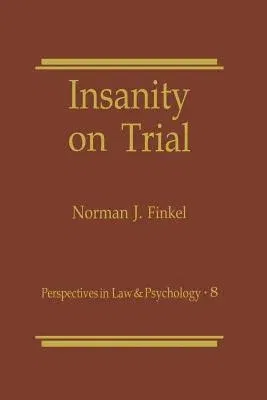Norman J Finkel
(Author)Insanity on Trial (Softcover Reprint of the Original 1st 1988)Paperback - Softcover Reprint of the Original 1st 1988, 30 September 2011

Qty
1
Turbo
Ships in 2 - 3 days
In Stock
Free Delivery
Cash on Delivery
15 Days
Free Returns
Secure Checkout
Part of Series
Perspectives in Law & Psychology
Print Length
398 pages
Language
English
Publisher
Springer
Date Published
30 Sep 2011
ISBN-10
1461289246
ISBN-13
9781461289241
Description
Product Details
Author:
Book Edition:
Softcover Reprint of the Original 1st 1988
Book Format:
Paperback
Country of Origin:
NL
Date Published:
30 September 2011
Dimensions:
22.86 x
15.24 x
2.29 cm
ISBN-10:
1461289246
ISBN-13:
9781461289241
Language:
English
Location:
New York, NY
Pages:
398
Publisher:
Weight:
589.67 gm

